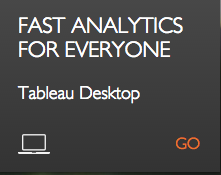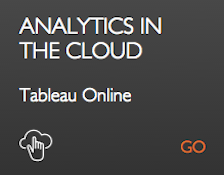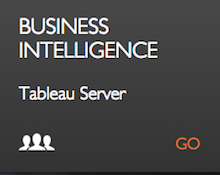With more than 23,000 customer accounts, Tableau has established itself as a powerhouse of data visualization experts. Clients include aerospace companies such as SpaceX, healthcare institutes like John Hopkins Hospital, and even financial sector customers such as Goldman Sachs. But what does Tableau- a rather expensive budget line item- do for its non-profit customers like the Red Cross? What does data visualization even mean for non-profit groups, let alone arts organizations?
The presence of Tableau’s software across all these sectors is indicative of the direction information, progress, and money is moving across the globe. We have become a results oriented society, and undoubtedly arts organizations need to adapt. Tableau is one promising avenue, and their services are not only helpful, but also entirely comprehensive.
Essentially, they are really, really, really good at putting the bigger picture together for an organization to understand its strengths and weaknesses in all aspects of their business. Emphasis on the “all”. Ticket sales, demographics, attendance records, and any type of data in isolation do not have a lot of meaning, or hold a lot of weight with board members, when placed in a list or Excel sheet. Tableau’s services, from one on one consultation to actual image production, help create the narrative that an organization needs to tell, as well as illustrate areas for improvement in the strategic planning process.
The service is twofold- Tableau provides a means of data analysis and collection, as well as individual consultant support. For instance, data from program impact mapping, can help organizations argue their case for grant money or donations more effectively. Furthermore, the market research capabilities of the software, diagnoses institutional weak points and limitations. The 24/7 expert-support of Tableau’s staff ensures organizations can address both issues pro-actively. In addition, their experts make certain that organizations are collecting the data they actually need, not just what they think they need- one of the most common problems faced by any organization.
Tableau’s unique approach to not only compiling information for its clients, but providing thorough education of what that data means for its customers, and how to move forward, is what sets this platform apart from other data visualization companies. Rather than an organization handing off a large amount of information to a data visualization company and regurgitating it back to an organization, Tableau goes above and beyond. It will condense the data, create the picture, and walk the client through strategies to best use whatever the findings may be.
The caveat to all of this may be, however, what has Tableau ever done for an arts institution? Truth be told, the company does not openly advertise partnerships with cultural organizations. Furthermore, the $1999 per user, per year price tag is likely to scare off many small non-profits, not to mention the ominous “contact us for pricing” when it comes to the actual business platform edition. In fact, the cheapest variation is the online only format that still costs $500 per user, per year. That being said, the investment in a service like Tableau is considerably cheaper than the investment in human labor it would cost to have a staff member that solely oversaw data analysis. A data analyst position at a non-profit might sound like a foreign concept now, but the need for intelligent and accurate data analytics is the way that many organizations continue to thrive. It helps institutions better understand their markets, improve their programming, and better support their claim for financial support.
Data does not have to be scary or overly complicated, and Tableau is designed to alleviate some of the stress organizations may feel to make sense of the immense amount of records they are collecting. In actuality, the narratives that Tableau creates for its organizations through data visualization are some of the strongest tools organizations have for defending their mission and progressing as institutions.






